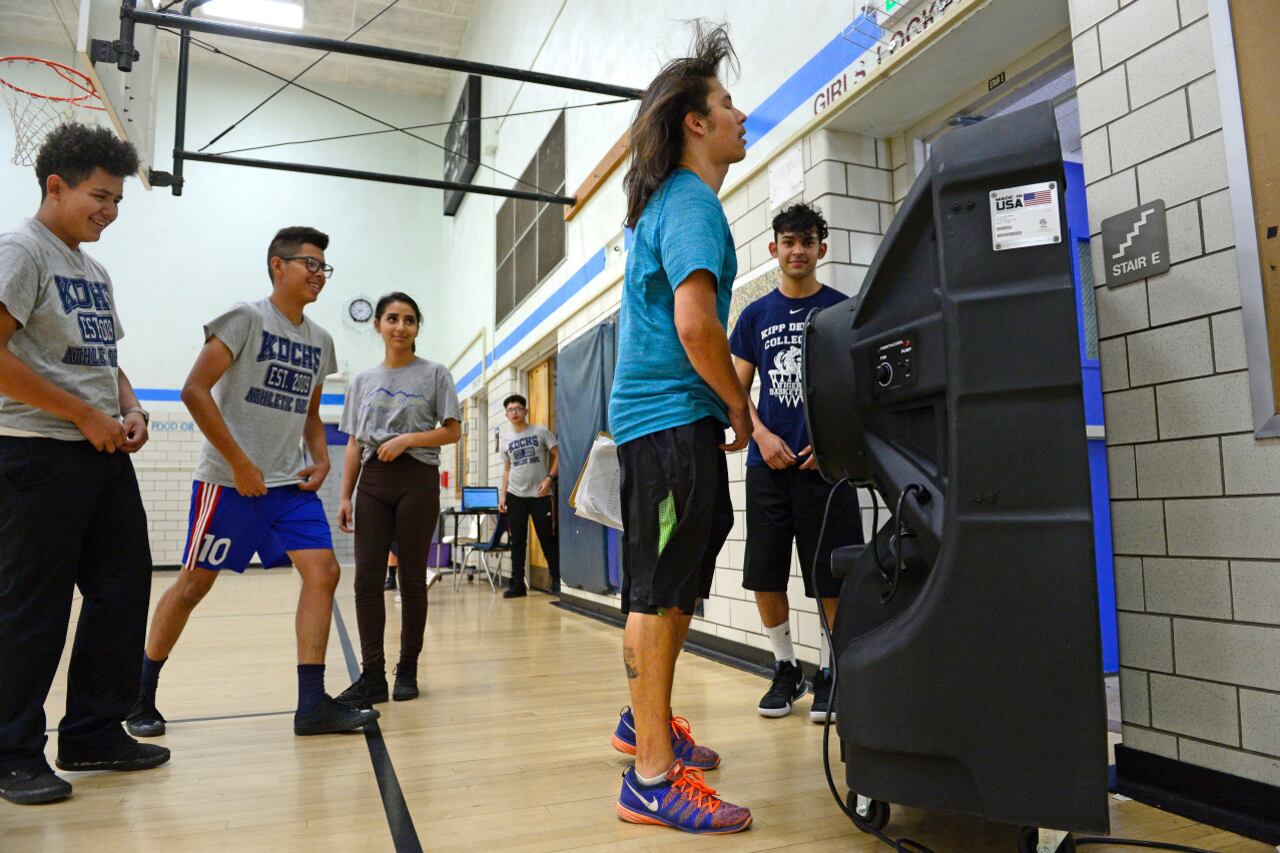Five years ago, former Mayor Bill de Blasio vowed that every New York City public school classroom would be air conditioned by 2022.
Now, after early setbacks and changing deadlines, city officials say they have followed through on that goal, with roughly 19,000 instructional spaces out of nearly 60,000 total receiving air conditioning since 2017.
“This initiative has since completed, and our Division of School Facilities continues to work on upkeep of units to ensure safe and comfortable learning environments for our students and staff,” education department spokesperson Jenna Lyle said in a statement.
The additional air conditioning brings relief to thousands of students and staff, who have sweltered in their classrooms for years. School years in New York City routinely include more than 30 days of temperatures of at least 80 degrees, according to a Chalkbeat analysis of federal data, and climate change is likely to create longer and more frequent heat waves.
Mitigating heat in classrooms may spark academic benefits, too. Across the country, students in classrooms without air conditioning learn less during school years with a greater number of hot days, researchers have found. In New York, students who took state tests required for high school graduation on 90-degree days were 11% more likely to fail an exam than on a 72-degree day.
Chanan Kessler, who has taught at seven city schools over 17 years, estimates that only about 20% of his classrooms have been air conditioned. During his first year of teaching, he leaned over a student’s desk only to drip sweat on her worksheet, leading the student to brush him away. He proctored Regents exams on hot days while students were fasting for Ramadan, a situation he described as “heartbreaking.” More broadly, hot classrooms sap students of energy leading to less engagement, he said.
“It would just take one element of the physical environment out of the equation and make it easier just to focus on our educational mission,” he said of the air conditioning upgrades.
Still, some educators said they are unsure of how reliable the cooling will be, as some have experienced outages or temperatures that vary wildly with little control. The initiative also does not cover every school space where students spend time or even receive instruction. Gyms and other public assembly spaces were not required to be air conditioned under the expansion. About 40% of spaces used for physical education don’t have air conditioning, Lyle said.
And some rooms used for academic instruction will continue to lack air conditioning. Officials said spaces that were not initially designed to be classrooms — but have been “repurposed” as instructional spaces — were not included in the expansion. Lyle did not provide additional details about which specific rooms are not covered by the program. She also did not respond to a question about why 19,000 rooms were outfitted with air conditioning when the city originally claimed that 11,500 classrooms needed it.
Ashley Hawkins, a librarian at three high schools that share a campus in East Flatbush, said the library has no air conditioning even though she teaches classes there. The library was reopened after renovations in 2019, but no air conditioning was installed.
“When you actually walk into the library it’s like a wall of heat will hit you,” Hawkins said. “Some kids will turn around and walk out.” On hotter days students crane their heads out of the third-floor windows to catch a fresh breeze.
“When there’s the space that’s been dedicated to reading and the promotion of reading and some students feel like they can’t physically be in the space, that sends a message about the value of reading,” Hawkins said. “It makes me feel like I’m not valued as much by the DOE.”
The city has allocated $380 million in capital funding for the air conditioning initiative for electrical upgrades, said Kevin Ortiz, a spokesperson for the School Construction Authority. Education department officials did not answer questions about the total cost of the project, including money that was spent outside the capital budget. The Independent Budget Office said the department has budgeted about $8.3 million annually over three years using federal stimulus money.
Has that funding translated into air conditioning in every classroom? With the school year fast approaching, help us investigate whether the education department has followed through on that promise by filling out the form below.
Alex Zimmerman is a reporter for Chalkbeat New York, covering NYC public schools. Contact Alex at azimmerman@chalkbeat.org.
If you are having trouble viewing the survey, go here.






